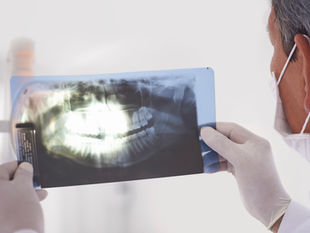
TMJ Exercises: Relieve Jaw Pain with the Rocabado 6x6 Routine
Jul 9
3 min read
1
66
0
If you’ve been struggling with jaw pain, clicking, or tightness, you may have heard of TMJ exercises to help manage symptoms. One of the most respected and clinically tested routines is the Rocabado 6x6, a set of six exercises done six times a day, designed to reduce tension, restore joint alignment, and improve overall jaw function.
Whether you're dealing with TMJ disorder, bruxism, jaw clenching, or chronic facial pain, targeted exercises can play a vital role in your recovery—especially when tailored to your specific condition.
Why Do TMJ Exercises Matter?
The temporomandibular joint (TMJ) connects your jaw to your skull and plays a key role in speaking, chewing, and even posture. When the joint or surrounding muscles become imbalanced or inflamed, it can lead to pain, limited mouth opening, headaches, neck pain, and more.
While splints and medications can offer relief, therapeutic jaw exercises provide a long-term strategy to retrain the muscles and reduce strain on the joint. The Rocabado 6x6 program is a foundational tool for many TMJ specialists.
What Is the Rocabado 6x6?
Developed by Dr. Mariano Rocabado, a renowned physical therapist and TMJ expert, the Rocabado 6x6 consists of six simple exercises, performed six times per day. These exercises focus on improving jaw position, cervical spine alignment, and breathing mechanics.
🔑 Tip for success: Consistency is key. Each session takes just a few minutes, and it’s important to perform the movements slowly and with control.
🦷 1. Rest Position and Nasal Breathing
Goal: Train the tongue and jaw to rest in a relaxed, healthy position.
How to do it:
Place your tongue gently against the roof of your mouth, just behind the front teeth.
Keep lips closed and teeth slightly apart.
Breathe slowly through your nose.
🧘♀️ 2. Controlled Mandibular Opening
Goal: Improve coordination of jaw opening while keeping the joint aligned.
How to do it:
Place your tongue in the rest position (roof of the mouth).
Slowly open your mouth as wide as you can without pain—do not let the tongue lose contact.
Avoid forward chin jutting or jaw deviation.
🔁 3. Rhythmic Stabilization
Goal: Build muscle stability and control in all directions.
How to do it:
Place your hand on the side of your jaw.
Gently push your jaw into your hand (to the left/right), but don’t let it move—resist the motion.
Repeat forward, backward, and downward resistance with your hand.

Hold your jaw open slightly against resistance
🧍 4. Axial Extension of the Neck (Chin Tucks)
Goal: Align the head and neck to reduce tension in the jaw.
How to do it:
Sit or stand tall.
Tuck your chin straight back (like making a double chin), keeping your eyes level.
Hold for 3-5 seconds and release.

🪞 5. Shoulder Retraction
Goal: Improve posture and reduce strain on neck and jaw.
How to do it:
Sit or stand tall.
Pull both shoulders back and down, squeezing your shoulder blades together.
Hold for 3-5 seconds, then relax.

Shoulder blades should be retracted to prevent rounded shoulders
🌬️ 6. Deep Diaphragmatic Breathing
Goal: Reduce overall muscle tension and engage the parasympathetic nervous system.
How to do it:
Sit with good posture.
Place one hand on your chest and one on your stomach.
Inhale through your nose, letting the stomach rise.
Exhale slowly through your nose or mouth.
Avoid shallow chest breathing.
When to See a TMJ Specialist
While the Rocabado 6x6 is a powerful tool, it’s not a one-size-fits-all solution. TMJ disorders can stem from muscle dysfunction, joint misalignment, postural issues, or even nerve pain—and each requires a different treatment approach.
👉 A TMJ specialist can perform a detailed evaluation, identify the root cause of your symptoms, and create a customized exercise plan designed for your specific diagnosis.
Ignoring symptoms or doing the wrong exercises can sometimes make things worse. That’s why professional guidance is key.
Final Thoughts
Incorporating TMJ exercises like the Rocabado 6x6 into your daily routine can be a game-changer for managing jaw pain, tension, and dysfunction. But to get the best results, pair them with expert care and a personalized plan.
Are you experiencing jaw pain, headaches, or facial tightness?
Schedule a consultation with a TMJ and Orofacial Pain Specialist today to get a comprehensive diagnosis and a treatment plan designed just for you.






